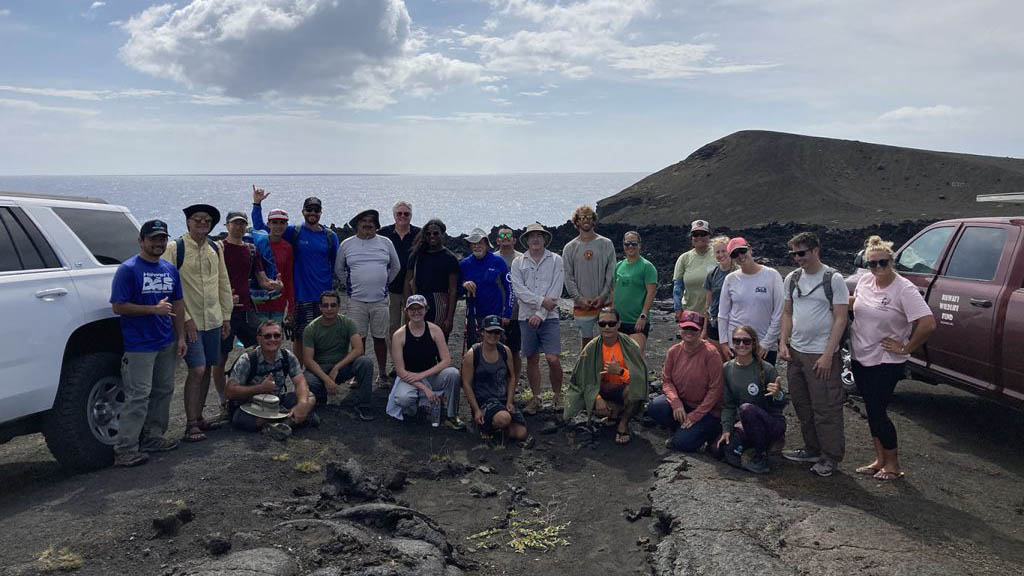11/7/22 – The 5th International Symposium on Anchialine Ecosystems held in Kailua-Kona
In early November, over 125 anchialine enthusiasts from Hawaii and around the world gathered in Kailua-Kona for the 5th International Symposium on Anchialine Ecosystems (ISAE). Held every three years, this was the first ISAE that was set in the US and the Pacific, which brings together an international audience to discuss and share all things anchialine. A term unknown to most, anchialine is derived from the Greek word anchialos, meaning “near-the-sea”.
Anchialine habitats are scattered all over the world, defined as land-locked bodies of brackish water near the coast that have underground connections to groundwater and seawater with tidal influences. Anchialine habitats typically appear as nothing more than small shallow pools, but are actually windows to an expansive and fascinating underground ecosystem, home to a variety of unique animals, microbes and algae.
In Hawai‘i, over 600 anchialine habitats have been documented—one of the highest concentrations of these ecosystems in the world—inhabited by a variety of endemic animals and microbes found nowhere else. The most notable and popular Hawaiian anchialine animal is the ‘ōpae ‘ula. Equally important are the historical significance of anchialine pools, and the cultural and traditional practices that are directly tied to these ecosystems, known as wai ‘ōpae or loko wai kai, in Hawaiian. Unfortunately, anchialine ecosystems in Hawaii have been severely impacted by invasive species, pollution and human activities, and are in urgent need of protection and restoration.
With Hawaii’s rich culture and history tied to anchialine ecosystems, this year’s ISAE was grounded upon the importance of culture, and our connection and responsibility to our place. An opening protocol at Kamakahonu, led by Ku‘ulei Keakealani and Lehua Kamaka, set the course for the symposium. A variety of intriguing presentations and discussion topics followed over two days ranging from anchialine biology, environmental sciences, genetics, restoration, education and resource management. A handful of field trips to celebrated and sacred sites with anchialine pools were held on the last day, particularly for visiting participants to connect to these resources and places.
The Division of Aquatic Resources was proud to be co-organizers of the 5th ISAE, along with Hawai‘i Wildlife Fund, Division of Forestry and Wildlife, Division of State Parks, Hui Loko, The Nature Conservancy, University of Hawai‘i, U.S. Fish and Wildlife Service, Kamehameha Schools, U.S. Geological Survey, Lili‘uokalani Trust, He‘eia Bay Forever, Hawai‘i Fish Habitat Partnership, Hawai‘i Mountain Running, National Park Service, Kua‘aina Ulu ‘Auamo, Hawai‘i Coral Reef Initiative, David Shepard Hawai‘i, Mauna Lani Auberge Resorts, and Four Seasons Resort.



